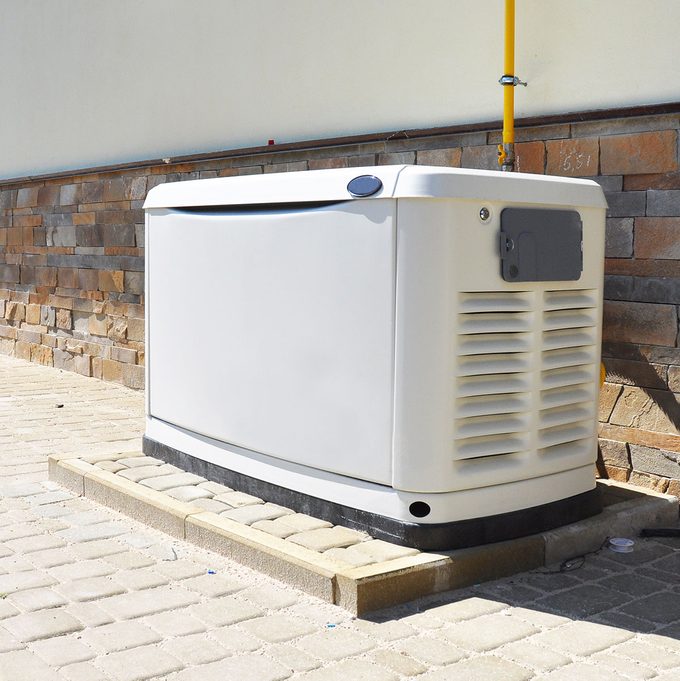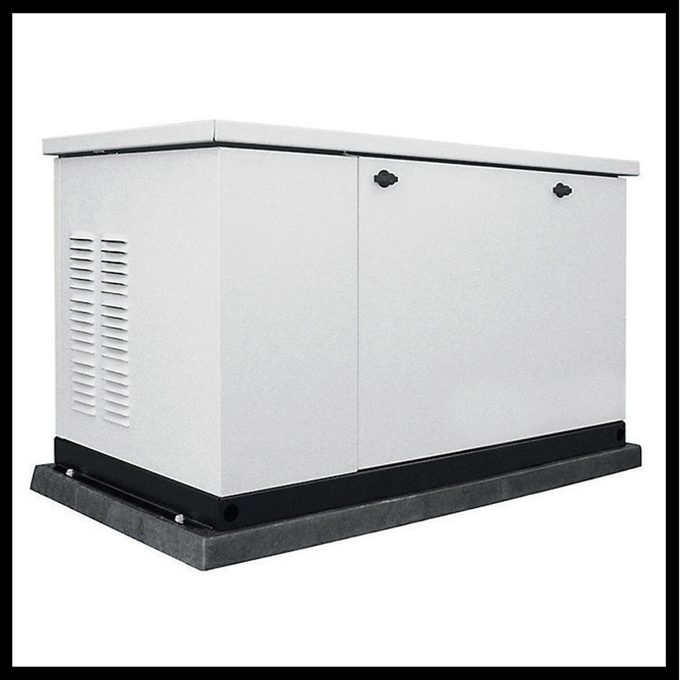Choosing the Right Backup Power Generator for Emergencies
It just takes one downed power pole to interrupt the fragile chain of electricity connecting your house to the power station. The right home generator can keep all of your essential and favorite electronic items working.
Our editors and experts handpick every product we feature. We may earn a commission from your purchases.
Backup Power
When the electrical grid fails, backup generators can keep your refrigerator running and power your lights, microwave, air conditioners, TVs, computers and cell phone chargers. You can even run your washer and dryer off of an emergency generator if you need to. And in the aftermath of a storm, it will allow you to run circular saws and other power equipment. All in all, having a backup generator can significantly improve your ability to comfortably manage a power outage and quickly recover from a storm.
There are two basic types of generators to consider: stationary and portable.
Stationary Systems
In these systems, the generator is connected indirectly to a home’s wiring system. They are most suitable for people who regularly experience long power outages or who have special requirements for continuous power.
Stationary systems typically run off natural or propane gas and have a “transfer switch” that allows you to select the equipment you want to be powered. It also prevents the generator from feeding power back into the utility supply system, endangering utility line workers. The whole system generally costs $3,000 or more and can provide 10 to 30 kilowatts of power.
In most areas, installing a backup system requires a permit and installation approval from an electrical inspector. Unless you are an extremely electrical-savvy do-it-yourselfer, we recommend the system be installed by a licensed electrician.
Portable Generators
These units run off a small gasoline engine and can power a limited number of lights and appliances via extension cords. Frequently used to provide emergency power during and after a storm, these units are easy to store and roll wherever you need them. A portable generator for this use can typically run for eight to 12 hours on a tank of gas and provide two to eight kilowatts or more. Prices start at $500.
Generator Safety
Whichever kind of generator you select, think safety first. Generators can produce carbon monoxide, a colorless, odorless and deadly gas. According to the Consumer Products Safety Commission, 28 people died from carbon monoxide poisoning associated with portable generators after Hurricane Katrina.
Here’s how to use generators safely:
- Always use generators outdoors, away from doors, windows and vents. Never place them in homes, garages, basements or other enclosed areas, even with plenty of ventilation.
- Even if you use a generator outdoors, install battery-operated carbon monoxide alarms in your home and test them based on the manufacturer’s directions.
- Keep the generator dry, and dry your hands before touching the generator.
- With portable generators, use heavy-duty, outdoor-rated, three-prong extension cords that are in good condition. Use GFCI-cords for maximum safety.
- Before refueling the generator, turn it off and let it cool. Store fuel outside in properly labeled, approved containers away from any fuel-burning appliances.
- When using the generator, start your high-wattage devices first, one at a time, then proceed to lower-wattage devices.
What Size Generator Is Right for You?
Here’s how to figure out the generator capacity you need: Determine the electrical requirements of the devices you’d like to run, and add them up. Say you wanted to run a small microwave (750 watts), radio (200 watts) and four lights (300 watts total). That requires at least 1,250 watts.
However, devices with motors need much more power to start them than they use running. A refrigerator that runs at 1,200 watts might require up to 3,000 watts to start.
Here is a list of what you can expect from three typical sizes of generators:
- A 3,550-WATT generator can easily power:
- One refrigerator;
- One air conditioner (10,000 BTU);
- One television;
- Four lights (75 watts each).
- A 5,000-WATT generator can easily power:
- One refrigerator;
- One air conditioner (10,000 BTU);
- One television;
- Four lights (75 watts each);
- One microwave (1,000 watts);
- One deep freezer.
- An 8,000-WATT generator can easily power:
- One refrigerator;
- One air conditioner (10,000 BTU);
- One television;
- Eight lights (75 watts each);
- One microwave (1,000 watts);
- One deep freezer;
- One 1/2-hp well pump;
- One electric stove;
- One security system;
- One garage door opener.





